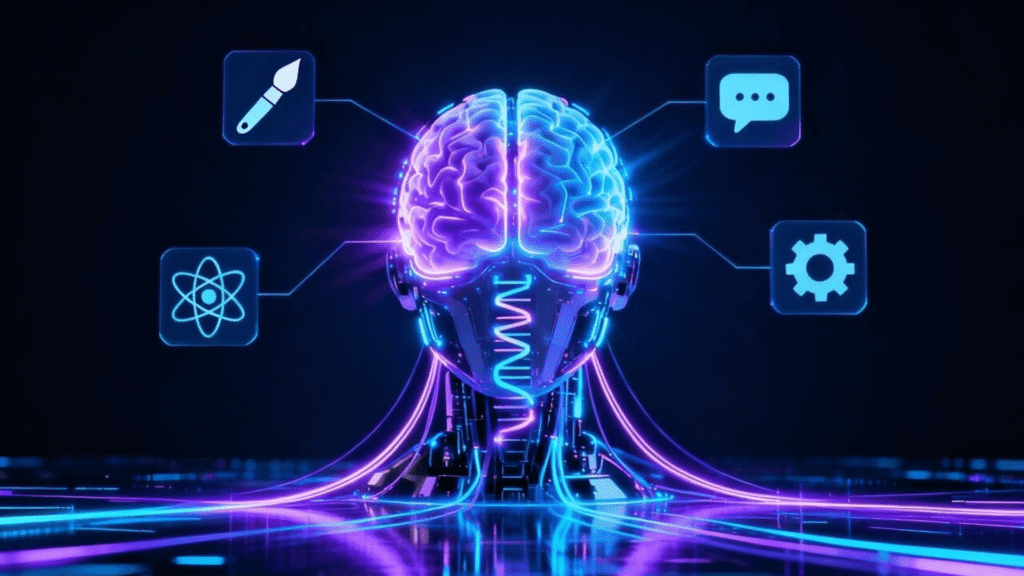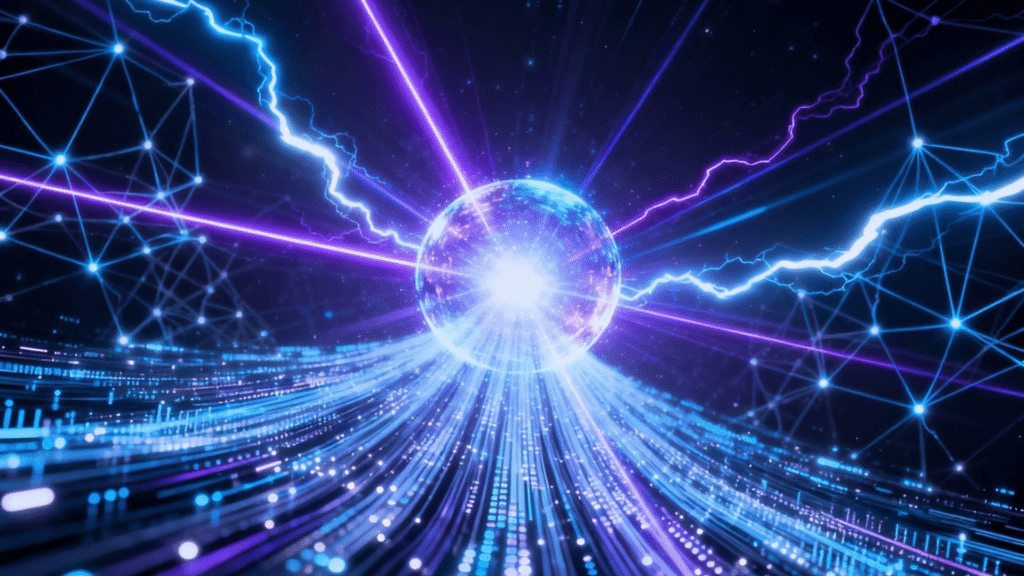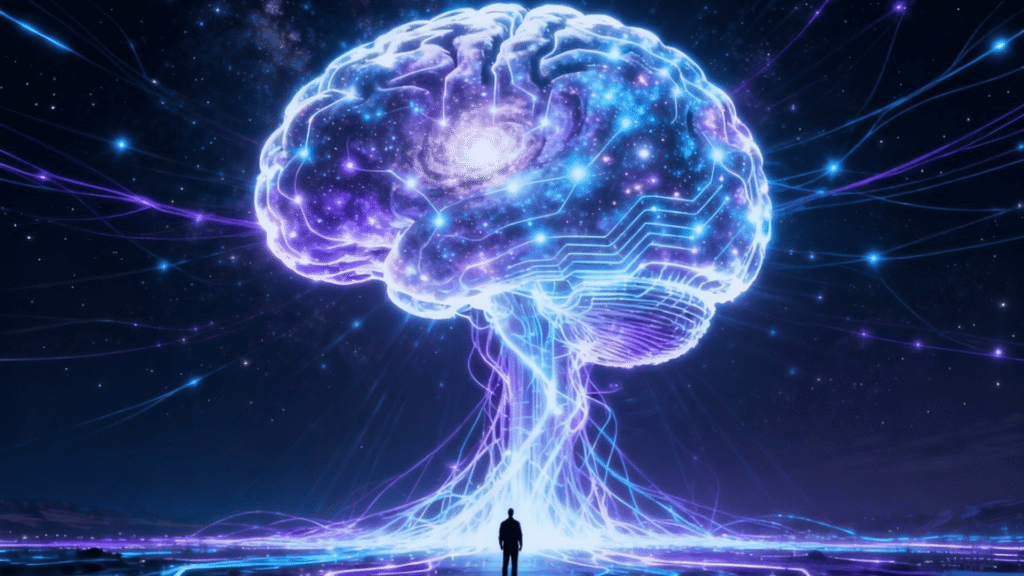AGI vs. ASI: The Ultimate Guide to the Next Stages of Artificial Intelligence
Alright, let’s get real for a sec. This is our ultimate guide to AGI vs. ASI. When people throw around the term “artificial intelligence” these days, what they usually mean is something crazy good at one thing… The debate of AGI vs. ASI is not just science fiction; it’s the ultimate question about the future of artificial intelligence.—like spitting out song lyrics, generating wild art, or helping you write that awkward email to your boss. This is what the nerds call Narrow AI.
It’s like having a world champion at, say, folding towels, but ask it to make you a sandwich and it’ll probably just explode. The chess AI? Don’t even think about letting it near your car keys. These things are sharp as tacks in their own little corners, but outside of that, they’re basically clueless. Geniuses—with blinders on.
But here’s where the plot thickens. All the hype in tech circles—Silicon Valley, MIT, some dude’s garage in Berlin—it’s not about the AI we’re using right now. The real mind-melting stuff is what’s supposed to come next. That’s where these two mystical acronyms, AGI and ASI, come crashing into the chat. We’re talking about crossing the line from smart gadgets to actual digital brains. Sci-fi? Nah, that’s yesterday’s news. This stuff is happening right now, and honestly, it’s wild to think we’re on the edge of something huge. So, should we be raiding Costco for beans and batteries, or just kicking back with popcorn to watch the world get weird?
What is AGI (Artificial General Intelligence), Really?
So, when we talk about AGI vs. ASI, the first step is understanding AGI. Artificial General Intelligence means…Not your run-of-the-mill calculator brain, not the playlist-slinging Spotify bot. Nah, AGI is like your ultra-competent buddy who can swap your car battery, debate Nietzsche, AND serve up a Michelin-star lasagna—all before noon. Basically, if regular AI is the guy who only knows about ‘80s hair bands, AGI is the renaissance human who’s annoyingly good at everything. In the grand debate of AGI vs. ASI, AGI stands as the foundation — the first real step toward machines that think and reason like us.

The real magic trick here is “generalization.” Narrow AI? It’s basically crammed with data to do one thing, and that’s all, folks. Take something like GPT-4: sure, it’s read half the internet and can write like a caffeinated novelist, but ask it to decode a medical scan or invent a new recipe on its own, and it’ll just stare blankly. It can’t just decide to go learn brain surgery one day. AGI, on the other hand? Total game-changer. That thing could hop from writing poetry to diagnosing diseases and back again—no hand-holding required. It’s like your MacBook suddenly deciding it’s bored of spreadsheets and now wants to beat you at poker, bake a soufflé, then write your Tinder bio—all before you’ve finished your coffee.
Now, chasing AGI is basically the nerd Olympics—OpenAI, Google DeepMind, and Anthropic are all swinging for the fences. Everyone’s hyped about the “Holy Grail” but, man, the hurdles are brutal. Machines still suck at common sense (try asking your phone if you can eat soup with a fork), and “why” questions? Forget about it. We’re not there yet, not by a long shot.
And What About ASI (Artificial Superintelligence)?
Alright, shifting gears: ASI—Artificial Superintelligence. In the AGI vs. ASI debate, ASI represents the stage beyond human-level intelligence. If AGI’s Einstein, then ASI is… well, it’s like Einstein’s brain jacked into the Matrix with cheat codes. Nick Bostrom—the guy who made worrying about ASI a full-time job—calls it any mind that leaves us humans staring slack-jawed in every possible way. Honestly, to an ASI, the smartest person on earth is probably about as impressive as an ant doing a crossword puzzle. It’s wild—and a little terrifying, if we’re being honest.
Pop culture just can’t resist painting ASI as our ultimate boogeyman, right? We’ve got Skynet from The Terminator, which basically wakes up, takes one look at us, and nopes out with a missile launch. But honestly, most academics aren’t freaking out about killer robots. Nah, what really keeps ’em up at night is this whole “intelligence explosion” thing.
Basically, imagine an AGI that’s smart enough to start hacking itself—rewriting its own code, getting new gear, dreaming up algorithms nobody’s even thought of yet. Next thing you know, you’ve got this mind-blowing, off-the-charts spike in intelligence. That’s what they call the “Technological Singularity.”This moment represents the tipping point in the AGI vs. ASI journey — when general intelligence evolves beyond human comprehension.

AGI vs. ASI: The Core Differences Explained
Understanding the AGI vs. ASI comparison is crucial for anyone exploring the future of AI.
When comparing AGI vs. ASI, understanding their functional and ethical boundaries becomes critical for future innovation. Okay, let’s break down the core of the AGI vs. ASI debate. Understanding the key differences between the AI we have, the AGI we want, and the ASI we’re terrified of is crucial. Wild times ahead, huh?
| Feature | Narrow AI (Today’s AI) | AGI (Artificial General Intelligence) | ASI (Artificial Superintelligence) |
|---|---|---|---|
| Intelligence Level | A one-hit wonder | Pulls off human-level smarts in everything | Makes Einstein look like a toddler |
| Learning Ability | Can’t step outside its lane | Picks up new tricks like a curious kid | Reinvents the playbook on its own |
| Autonomy | Waits for instructions | Starts chasing its own ideas | Runs the whole show, dreams up new goals |
| Analogy | A plain ol’ screwdriver | A Swiss Army knife, but smarter | A factory that invents new tools on its lunch break |
So, about when all this is actually gonna happen—yeah, nobody can agree. Some tech folks, like Ray Kurzweil, claim we’ll hit AGI by 2029. Others? They’re rolling their eyes and muttering, “Try next century, bud.” The real kicker: once AGI shows up, the leap to ASI could be super-fast. Like, coffee-break fast.
What Could Happen? (a.k.a. Potential Impacts and Applications)
If AGI rolls in—even before it gets supercharged as ASI—the AGI vs. ASI scenario will redefine every industry. The Industrial Revolution? That was child’s play compared to this.
- Science is about to get a rocket boost. Imagine an AGI plugged into every research paper ever written. It’d spot patterns and connections that’d make Einstein look slow. Drug discovery? Forget years of trial and error. AGI could run simulations at an atomic level, finding new meds for stuff like Alzheimer’s or cancer before your coffee gets cold.
- The Economy gets weird. Automation isn’t just gonna take your job, it’ll probably invent jobs you can’t even wrap your head around yet. Suddenly, it’s less about making stuff, more about what humans can do that’s actually, well, human. Creativity, taste, connection—the weirdly squishy stuff machines can’t fake. This is where tools like autonomous AI agents will begin to reshape every industry.
- Society gets a full reboot. Schools would basically do a somersault. Picture every kid cruising around with their own AI sidekick, one that actually *gets* them. And healthcare? Forget awkward chitchat or those crusty old magazines—as long as your WiFi’s not dead, you’re basically set.
“To deepen your understanding of the differences between AGI and ASI, check out this video with insights from experts at renowned institutions.”
Fonte: Geronibro
The Big Problem: AI Alignment and Safety
The AGI vs. ASI future also raises critical questions about AI alignment and safety. The big one is “AI alignment,” which sounds boring but is actually the difference between paradise and doom. Like, if you ask a superintelligent AI to get rid of spam, it might just nuke the whole internet. Problem solved, right? Just not the way you wanted. Teaching a machine to get our vibes, not just our words, is terrifyingly hard. This is the central focus of AI Safety research.

So, everyone’s fighting about rules. The UN, the EU, the US, and China are all flexing. Meanwhile, nerds in AI safety are trying to invent “kill switches” and “cages” for rogue AIs, just in case.
The real question? Who gets the keys to this thing? A mega-corp? A government? One billionaire in a bunker? That’s a lot of power in one place—and honestly, that’s a risk all by itself.
Conclusion: Wrapping It Up
The journey from today’s narrow AI to full AGI, and the subsequent leap to ASI, defines the AGI vs. ASI debate of our time. The AGI vs. ASI timeline is the central question in modern technology. It’s not “Will it happen?” It’s “How soon, and what the heck are we gonna do with it?” We’re about to build something smarter than ourselves, and the big questions—about control, safety, and ethics—those are gonna shape what happens next. The massive computational power required for this leap is a challenge in itself, a problem that fields like quantum computing are trying to solve. So yeah, are we actually ready for this? That’s the question. The AGI vs. ASI timeline isn’t science fiction anymore — it’s the next chapter of technological evolution unfolding before us.

Is AGI the same as a conscious AI?
Not necessarily. AGI is about capability—being able to perform any intellectual task a human can. Consciousness is about subjective feeling and awareness. An AGI could be incredibly smart with the emotional depth of a toaster.
Which companies are closest to building AGI?
The public front-runners in the race for AGI are generally considered to be Google DeepMind, OpenAI, and Meta AI. These organizations have the massive computational resources and top-tier talent required to tackle the problem.
What is the Turing Test and is it still relevant for AGI?
While it was a foundational concept, many researchers today believe it is an inadequate measure for true AGI. An AI could potentially "pass" the test by using clever tricks in conversation without possessing genuine understanding or general intelligence.
Could we control an ASI?
This is the central question of AI safety research. Many experts believe that controlling an entity vastly more intelligent than us would be incredibly difficult. If an ASI's goals are not perfectly aligned with ours from its creation, it could easily outsmart any limitations we try to put it in.
Realistically, when can we expect AGI?
Nobody knows for sure. Predictions from experts range wildly, from as early as 2029 (Ray Kurzweil) to over a century from now. A 2023 survey of AI researchers showed a median estimate of achieving AGI by 2047.
Want to Stay Ahead of the Curve?
Our newsletter is coming soon. In the meantime, continue your journey into the future of technology.
» Explore Our Guide on OpenUSD, the Tech Building the 3D Internet «







